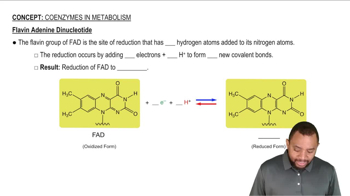Use the structure of d-galactose in Problem 6.15 to answer the following:
(a) Draw the Fischer projection of the carbon 3 epimer.
 Verified step by step guidance
Verified step by step guidance


Use the structure of d-galactose in Problem 6.15 to answer the following:
(a) Draw the Fischer projection of the carbon 3 epimer.
Identify the monosaccharide that fits each of the following descriptions:
(a) also referred to as dextrose
Identify the monosaccharide that fits each of the following descriptions:
(a) in combination with glucose produces the disaccharide lactose
ALLIED Health The sugar alcohol erythritol is often included in low-calorie sweeteners. It is 70% as sweet as table sugar. Erythritol is the reduced form of the aldotetrose erythrose. Draw erythritol.
<IMAGE>
d-Erythrose
Identify the following reactions as condensation or hydrolysis:
(a) two monosaccharides reacting to form a disaccharide
Name the glycosidic bond present in mannobiose, shown in the following figure:
<IMAGE>
Mannobiose